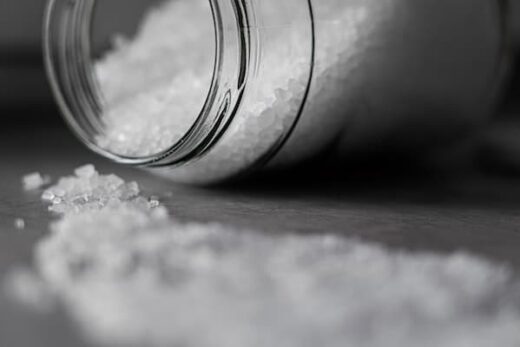
Salt is the main source of sodium in the diet. The salt we consume is absorbed directly from the digestive tract into the bloodstream. The surplus is filtered and eliminated by your kidneys, along with the necessary amount of water. However, although it is essential for the body, salt consumption should not be too high in our diet.
Impact of excessive salt consumption on health
Salt, a risk factor for many cardiovascular diseases
Excessive salt consumption can have adverse secondary effects on the entire cardiovascular system. There is a direct link between excess salt in the diet and high blood pressure. The genes that control blood pressure also regulate salt reabsorption in the kidneys.
Factor in the development of stomach cancer
Excessive salt consumption can lead to stomach cancer. High salt consumption promotes atrophic gastritis. Eventually, atrophic gastritis leads to stomach cancer.
Other dangers associated with salt consumption (excess)
- Excess salt clogs the arteries around the kidneys, leading to kidney failure.
- Too much salt increases the risk of osteoporosis. A high level of salt in the blood increases the elimination of calcium in the urine over several years, which can lead to a reduction in bone mineral density and worsening of osteoporosis.
- The sympathetic nervous system, which regulates many of the body’s functions, also pays the price of excess salt, with hypersensitive neurons that damage organs.
How can salt consumption be reduced?
To moderate salt consumption in the diet, you need to learn how to choose your food. As far as possible, reduce or limit processed foods. Ideally, opt for raw, unprepared foods (less salt). A few rules to follow:
- Avoid mineral waters that are too high in sodium
- As an aperitif, we tend to eat savoury products: replace them with cherries, apples or seasonal fruit cut into sticks or small cubes for dipping in a yoghurt sauce or a sauce based on fromage frais and fine herbs, or melon balls and dried fruit (prunes, grapes…).
- Be careful with the industrial products you eat: read labels carefully to identify the saltiest foods. Don’t rely on taste.
- For breakfast, you prefer jam to salted butter. If you’re on a strict salt-free diet, you should opt for “sodium-reduced” rusks. For example, cornflakes are on average 4 times saltier than mueslis!
At home, you can reduce salt consumption by:
- reducing the amount of salt added to cooking water;
- preferring starters such as puff pastry with cheese or smoked salmon;
- cooking your own meals;
- eat cheese only once a day; replace it with yoghurts or dairy desserts;
- choosing low-sodium products;
Advice
The WHO recommends that the salt consumed be “enriched” with iodine. An essential compound for healthy brain development in the fetus and young child.
- “Sea salt is not ‘better’ than refined salt simply because it is ‘natural’.” Whatever the origin of salt, it’s sodium that’s responsible for health problems.
- Some foods rich in salt don’t seem so salty because other ingredients, such as sugars, are sometimes added to mask the taste. It’s important to read labels for salt content.
- It’s not true that “Only the elderly have to worry about the amount of salt they eat” or that “Cutting back on salt could be bad for my health”.
Consuming too much salt increases blood pressure at any age. It’s also very difficult to eat too little salt, as it’s present in so many everyday foods.
Tips
- Add flavor to meals without overdoing the salt by using spices (cumin, turmeric, curry, nutmeg, onion or garlic powder, fresh ginger, balsamic vinegar, herbs (basil, oregano, etc.)).
- When cooking meats and vegetables, replace salt with a variety of aromatic blends or herbes de Provence.
- Spice up fish and raw vegetable salads with lemon juice.